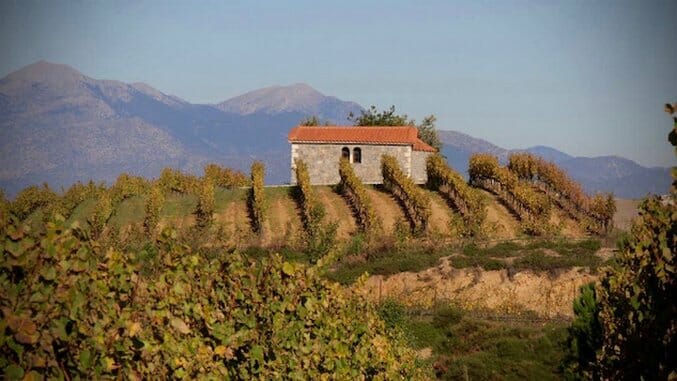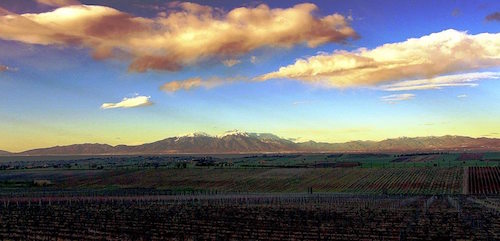My Big Fat Greek Wine List
Photo via Ktima Tselepos
When my daughter was nine or 10 she went totally nuts for Greek mythology – a situation that has never entirely cleared up, but that’s another story. At 10, she demanded to be taken to “the Ancient Lands” (Rick Riordan, you started this, can we borrow some drachmas, big guy?). I said I’d be happy to take her to Delos and Athens, on one condition. For context, she had to also go to Rome.
“Oh, please, Mom. Rome? Everyone knows they just ripped off the Greeks.”
It is a lot more complicated than that. The Romans ripped off everyone, not just the Greeks; and let’s face it, we kind of owe Rome for stuff like sewer systems and roads. But Italy eclipsed Greece as a winemaking powerhouse a long, long time ago, so it’s easy to forget that the Greek wine scene was sophisticated and rich with tradition back when Italy was in diapers and “France” was still “Gaul” and was considered the armpit of the Empire. Many Italian wines have Greek roots. “Greco di Tufo?” Tufo is Sandstone. “Greco” is QED. “Aglianico” comes from the same root as “Hellenic.” Vin Santo? It does not mean “holy wine,” but “wine from Santorini.” See where I’m going with this? Greece has been romancing the grape for over six thousand years. Let’s just say there’s some expertise there.
Yet Greek wines don’t get seen in this country as much as those produced by their neighbors to the north and west. And it is just possible that they rank among the most underrated wines on Earth. Why? My daughter would tell you it’s the Octavian’s fault, and his expansion of the Roman Empire. I’m less clear on that. What is clear is that underrated wines steeped in tradition equals very exciting price point to yum-factor ratios. Here are some Greek bottles to look out for.
Ktima Tselepos Mantinia
This refreshing white (though Moschoflero is a pink grape from which a vin gris can also be made) is a perfect picnic wine. The very aromatic nose is heavy on white flowers, citrus and roses, all of which are characteristic of this native Peloponnesian grape. The fruit comes from Arcadia, an ancient part of the Peloponnese said to be the home of Pan, one of the most ancient Greek gods and the patron deity of wilderness – and wine. This one is crisp and fresh thanks to late ripening in a cool microclimate, and expresses some similar characteristics to dry Gewurtztraminer and muscat. It’s definitely a warm-weather food wine, and can even stand up to notoriously hard to pair veggies like spinach and those assertive greens that show up in a lot of Greek dishes. (SRP $17)
-

-

-

-

-

-

-

-

-

-

-

-

-

-

-

-

-

-

-

-

-

-

-

-

-

-

-

-

-

-

-

-

-

-

-

-

-

-

-

-









































